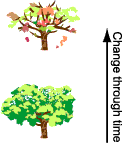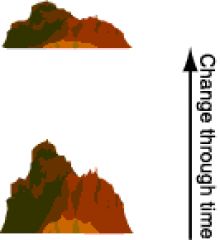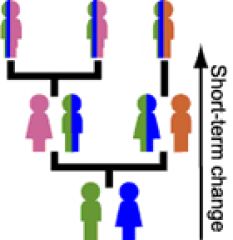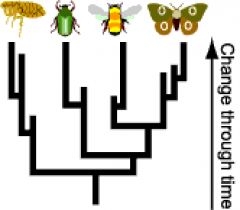An Introduction to Evolution
The definition
Biological evolution, simply put, is descent with modification. This definition encompasses small-scale evolution (changes in gene — or more precisely and technically, allele — frequency in a population from one generation to the next) and large-scale evolution (the descent of different species from a common ancestor over many generations). Evolution helps us to understand the history of life.
 |
 |
 |
 |
The explanation
Biological evolution is not simply a matter of change over time. Lots of things change over time: trees lose their leaves, mountain ranges rise and erode, but they aren’t examples of biological evolution because they don’t involve descent through genetic inheritance.
The central idea of biological evolution is that all life on Earth shares a common ancestor, just as you and your cousins share a common grandmother.
Through the process of descent with modification, the common ancestor of life on Earth gave rise to the fantastic diversity that we see documented in the fossil record and around us today. Evolution means that we’re all distant cousins: humans and oak trees, hummingbirds and whales.
Attribution
“An introduction to evolution.” Understanding Evolution. University of California Museum of Paleontology. 8 June 2020 <https://evolution.berkeley.edu/evolibrary/article/evo_02>.

